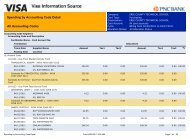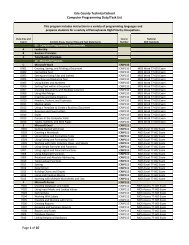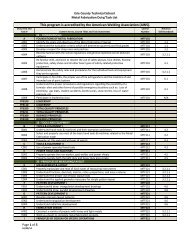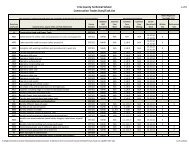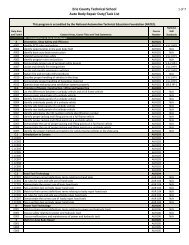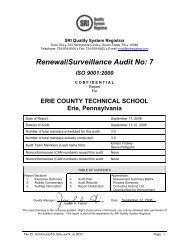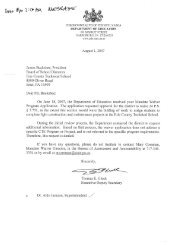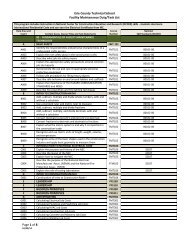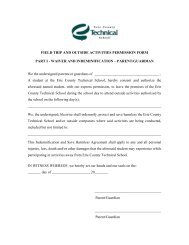We must not be too quick to criticize elementary schools for the job they are doing.Though schools vary in their performance, early grades educators are generally doing a good jobof teaching students to decode print through the use of phonics <strong>and</strong> other methods. At grade four,United States students lead the world in the ability to read (learn). It is by eighth <strong>and</strong> twelfthgrades that a negative disparity is found between the scores of American students <strong>and</strong> those ofother industrialized countries.Tests conducted by the Department of Education’s National Assessment of EducationalProgress show that more than 60 percent of high school seniors in the United States score at orbelow the basic level of reading (as compared to the proficient <strong>and</strong> advanced levels). A scan ofNAEP’s own literature points out that what is being measured in their tests is the ability ofstudents to perform higher order thinking while they read. The manual that NAEP publishes <strong>with</strong>their report every two years suggests that when grade level materials are used, students reading atthe “basic” reading level should be able to “demonstrate an overall underst<strong>and</strong>ing <strong>and</strong> makesome interpretations of the text.” Students reading at the “proficient” level should be able to“show an overall underst<strong>and</strong>ing of the text which includes inferential as well as literalinformation.” And students reading at the “advanced” level should be able to “describe moreabstract themes <strong>and</strong> ideas.” In addition, students reading at the advanced level should be able to“analyze [<strong>and</strong>] extend the information from the text by relating to their own experiences <strong>and</strong> tothe world.” (National Center for Educational Statistics, 1998).In other words, what the NAEP is measuring is the ability of students to perform higherorder thinking while learning. The question is, Are we teaching students how to think? Are wecreating the conditions in our classrooms in which students are routinely enabled to analyze,apply, synthesize, <strong>and</strong> evaluate what they read?How Schools Can Help Students Acquire Literacy SkillsWhat can schools do to help middle <strong>and</strong> high school students improve their achievementin learning? The systematic use of reading <strong>and</strong> writing to help students learn their subject matteris one answer. Students who are placed in an environment in which they are allowed to pursuelearning through the means of reading, writing, discussing in cooperative groups, <strong>and</strong> thusmanipulating ideas to construct meaning are finding that learning does not have to be difficult orboring. Rather, it can be fluid <strong>and</strong> engaging—even exciting. What students in such anenvironment learn is that, despite their background or home environment, they can succeed aslearners. A collateral benefit is that, while students in content area classes read, write, <strong>and</strong>discuss in order to learn content, they actually improve the thinking skills directly related tohigher performance in reading <strong>and</strong> writing.What About Students Who Are <strong>Reading</strong> Below Grade Level?<strong>Reading</strong> involves construction of meaning. Modern views of reading suggest that thereader, using the “set of tracks” left by the author <strong>and</strong> relating it to the reader’s prior knowledge,thereby constructs a message. The good news is that students who are reading below grade level,<strong>and</strong> who do not at a given time have the skills to read a piece of text independently, can read textconsiderably beyond their diagnosed reading grade level when they have the support ofcompetent peers <strong>and</strong>/or a facilitating teacher. Students practicing learning through reading in thisway can in fact read text that is as much as four years above their diagnosed reading levels©2004 <strong>MAX</strong> <strong>Teaching</strong> <strong>with</strong> <strong>Reading</strong> & <strong>Writing</strong>, 6857 TR 215, Findlay, OH 45840, 404-441-7008 http://www.maxteaching.com14
(Dixon-Krauss, 1996). The key is having well prepared teachers—teachers who know strategiesto help students (a) interpretively process text <strong>and</strong> (b) work cooperatively to manipulate the ideas<strong>and</strong> themes of the course.Students who have previously been frustrated by their lack of literacy skills find that theyare able to develop appropriate skills <strong>and</strong> strategies that can make all the difference. Themediated literacy instruction, which employs cooperative learning, helps such students gain theability to perform literacy skills autonomously. Stated another way – There is only one way tolearn literacy skills, <strong>and</strong> that is by practicing them…<strong>and</strong> there is only one way to get students topractice literacy skills, <strong>and</strong> that is to make it easy for them to do so. That is what <strong>MAX</strong><strong>Teaching</strong> is all about.How <strong>MAX</strong> <strong>Teaching</strong> Works<strong>MAX</strong> is an acronym that st<strong>and</strong>s for the three steps of a teaching framework that anyteacher can use. The acronym st<strong>and</strong>s for Motivation, Acquisition, <strong>and</strong> EXtension. It’s a way tohelp all students better learn their subject matter <strong>and</strong> improve their literacy skills. The essentialgoal of teachers who use the <strong>MAX</strong> teaching framework is to level the playing field by raising thebar for all students. This involves creating a classroom environment that provides instruction inbuilding skills to enable improved performance, while at the same time engaging all students inactive learning from textbooks <strong>and</strong> other forms of textual matter.Motivation:(the first step)Much of current research into motivation of students involves two simultaneous <strong>and</strong> oftencompeting drives <strong>with</strong>in the learner – striving for success <strong>and</strong> avoidance of failure (Marzano,2003). What the teacher does in the pre-reading phase is based on the awareness of these twodrives.Each class begins <strong>with</strong> activities designed to motivate students to become engaged in thelearning of content, even if it is content that is difficult or might not otherwise interest them. Thisfirst step is accomplished through the systematic use of both individual <strong>and</strong> cooperative activitiesthat help the teacher…• find out what the students already know about the topic to be studied,• assist students in connecting to <strong>and</strong> seeing the relevance of subject matter,• provide for increased conceptual underst<strong>and</strong>ing for all students,• introduce <strong>and</strong> model a literacy-related skill that the students will use to probe text <strong>and</strong>gather information for development of new underst<strong>and</strong>ings, <strong>and</strong>• help students establish concrete purposes for actively probing the text.It is through carefully guided implementation of all of these components that students whootherwise might not have taken an interest in the learning experience are guided to becomecurious about subject matter <strong>and</strong> to form a plan for finding new information.©2004 <strong>MAX</strong> <strong>Teaching</strong> <strong>with</strong> <strong>Reading</strong> & <strong>Writing</strong>, 6857 TR 215, Findlay, OH 45840, 404-441-7008 http://www.maxteaching.com15



